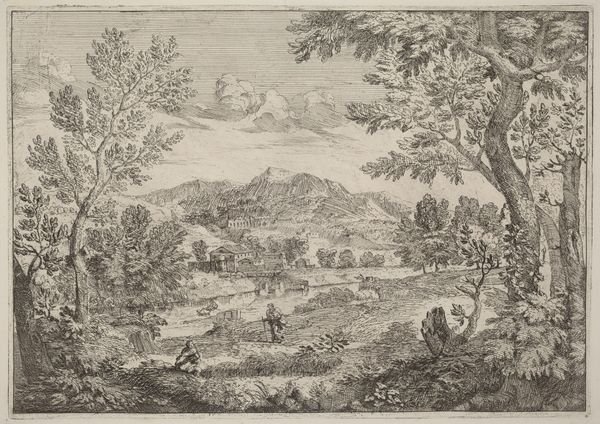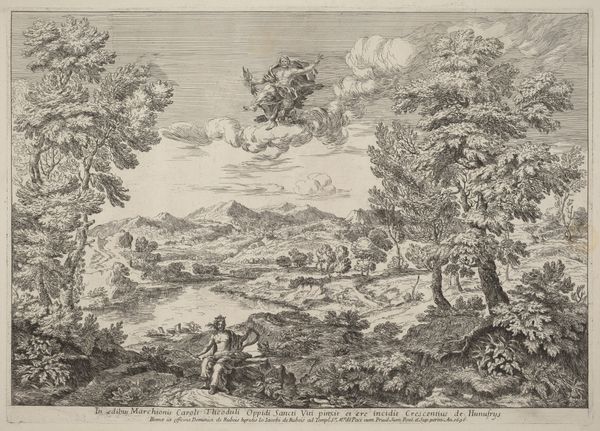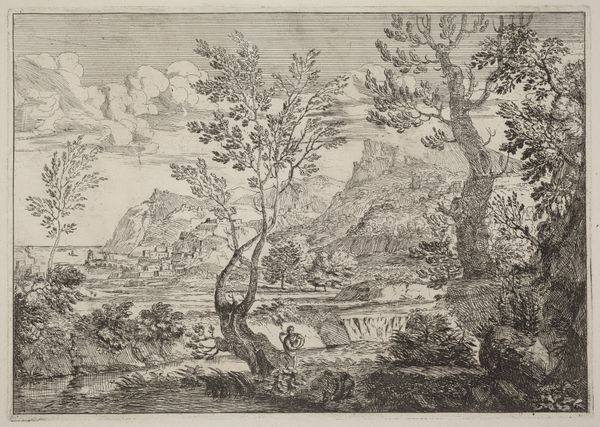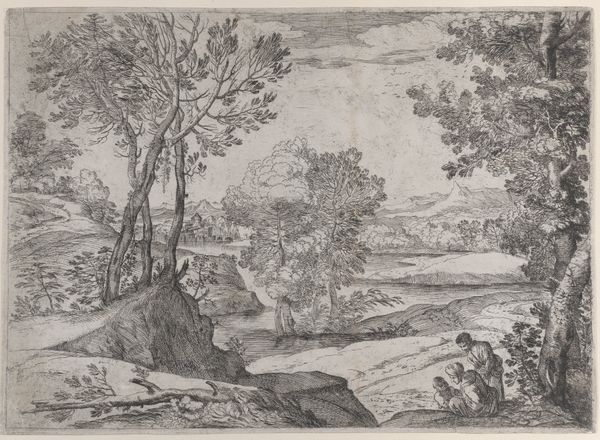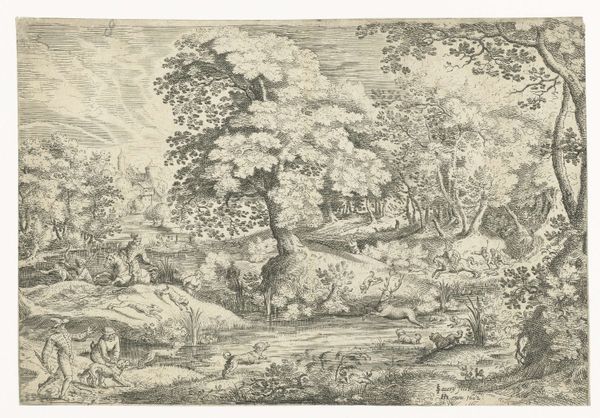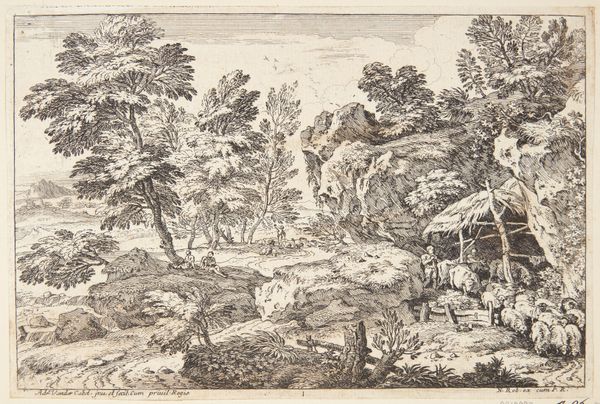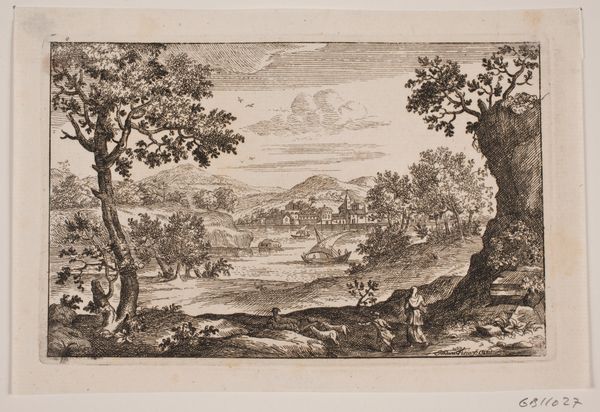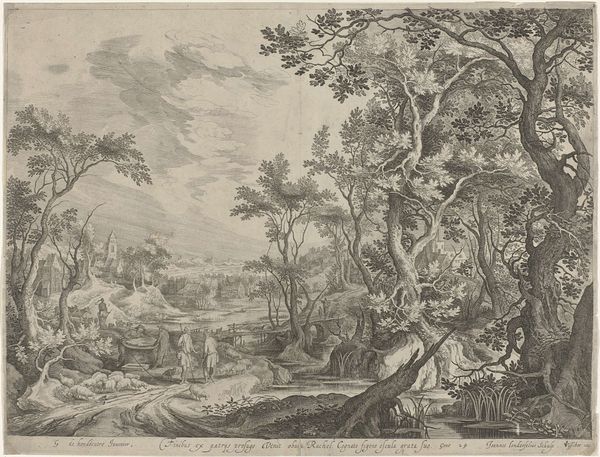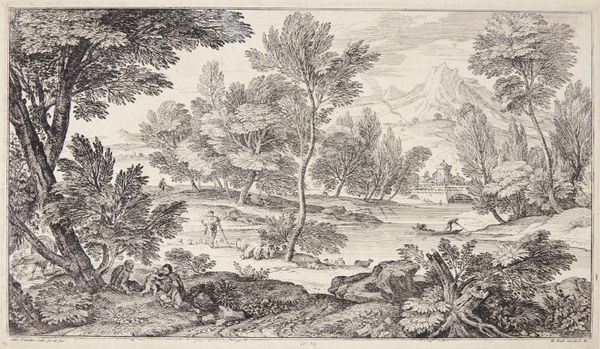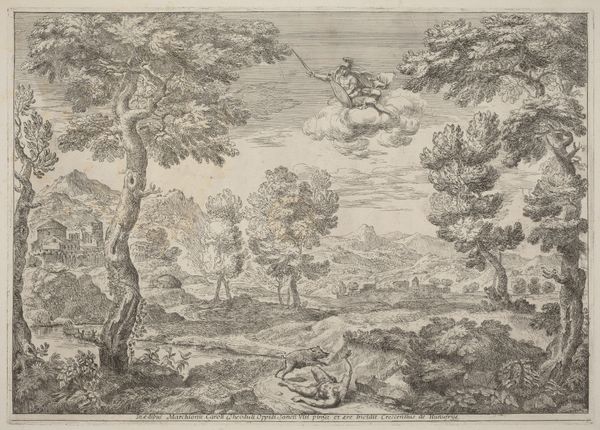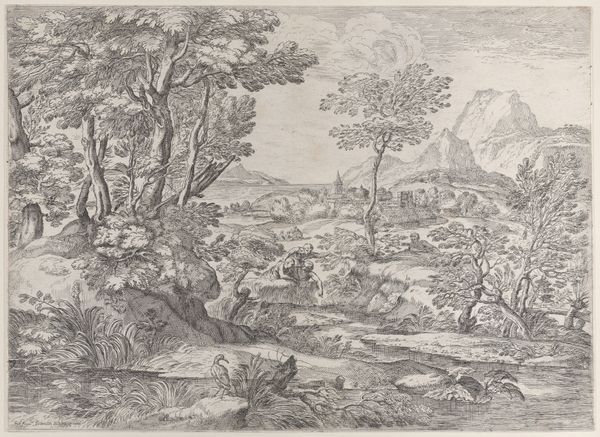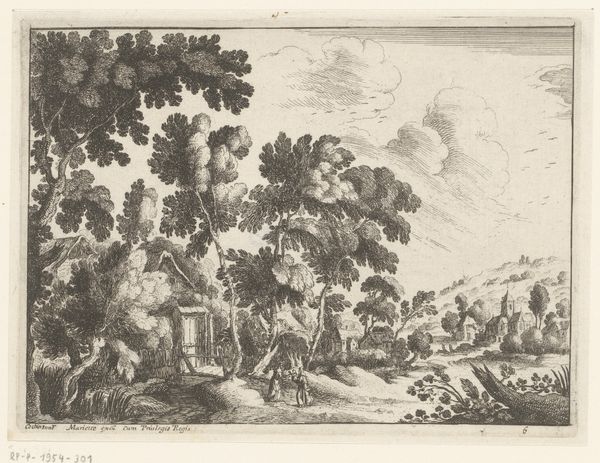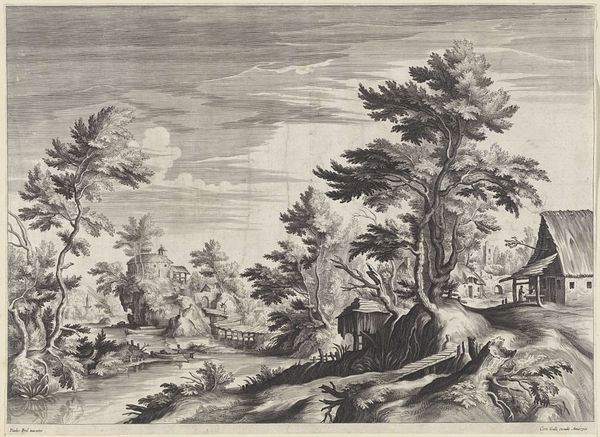
print, etching, engraving
# print
#
etching
#
landscape
#
figuration
#
line
#
history-painting
#
engraving
Dimensions: plate: 32 x 44.6 cm (12 5/8 x 17 9/16 in.) sheet: 35.1 x 49.2 cm (13 13/16 x 19 3/8 in.)
Copyright: National Gallery of Art: CC0 1.0
Editor: We’re looking at "Apollo and a Nymph Leading a Lion," an engraving and etching by Crescenzio Onofri, from 1696. It's quite striking. The figures in the foreground seem to exist in tension with the much wider landscape that fades in the background. How do you interpret this work? Curator: What strikes me is the relationship between power and submission staged within this idealized landscape. Consider the visual hierarchy: Apollo, a symbol of reason and order, floats serenely, while the nymph subdues the lion, an animal often associated with untamed power and masculinity. What are we to make of that domestication? Editor: So, it’s not just a straightforward depiction of mythology, but something more? Curator: Exactly. Think about the time. This was made at the cusp of major social change where people were interrogating traditional authority. So in showing the lion being led by the nymph, are we seeing a symbolic disruption of traditional power structures? What does it say that she is leading, not driving the lion, for example? Editor: That's fascinating. The gentleness implied is very different from traditional images of heroes subduing beasts through brute force. Curator: Precisely. And let's not forget the gaze of Apollo – he’s present, overseeing, perhaps sanctioning, this act of re-negotiation, a symbolic shift in societal expectations? Consider the engraving technique, the clean lines… Does it suggest a controlled narrative being imposed? Editor: That makes me think about the relationship between control and freedom and whose freedom counts. Curator: Absolutely. Seeing it this way really opens up the work beyond just a mythological scene and plants it firmly in the context of late 17th century cultural shifts. Editor: I’ll definitely be looking at engravings differently from now on. It's incredible how much a single image can reflect larger social currents. Curator: Indeed, art isn’t just about what you see on the surface, but about the conversations it starts and continues across centuries.
Comments
No comments
Be the first to comment and join the conversation on the ultimate creative platform.
